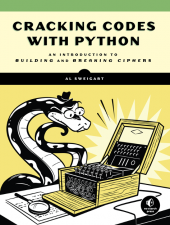Introduction
Chapter 1: Making Paper Cryptography Tools
Chapter 2: Programming in the Interactive Shell
Chapter 3: Strings and Writing Programs
Chapter 4: The Reverse Cipher
Chapter 5: The Caesar Cipher
Chapter 6: Hacking the Caesar Cipher with Brute Force
Chapter 7: Encrypting with the Transposition Cipher
Chapter 8: Decrypting with the Transposition Cipher
Chapter 9: Programming a Program to Test Your Program
Chapter 10: Encrypting and Decrypting Files
Chapter 11: Detecting English Programmatically
Chapter 12: Hacking the Transposition Cipher
Chapter 13: A Modular Arithmetic Module for the Affine Cipher
Chapter 14: Programming the Affine Cipher
Chapter 15: Hacking the Affine Cipher
Chapter 16: Programming the Simple Substitution Cipher
Chapter 17: Hacking the Simple Substitution Cipher
Chapter 18: Programming the Vigenère Cipher
Chapter 19: Frequency Analysis
Chapter 20: Hacking the Vigenère Cipher
Chapter 21: The One-Time Pad Cipher
Chapter 22: Finding and Generating Prime Numbers
Chapter 23: Generating Keys for the RSA Cipher
Chapter 24: Programming the RSA Cipher
Appendix: Debugging Python Code
View the detailed Table of Contents
View the Index

